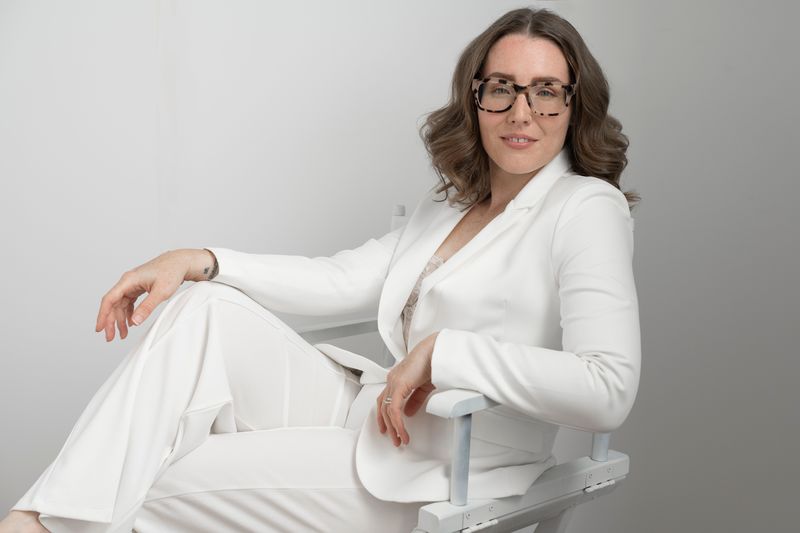I've bought, sold and lost a lot of digital cameras since the first one I purchased in 1999. And, with very few exceptions, I haven't especially enjoyed any of them, except for the most recent point-and-shoot I bought two years ago, the amazing Canon S95.
But my job requires me to take good photos in challenging light situations. Sometimes, it's perfectly passable to whip out my iPhone and shoot a usable picture. When that fails me, the low-light capabilities of the little S95 usually do the trick. But I've always wanted more. I'm jealous of the quality and versatility that comes from DSLRs my friends own.
I'm not, however, jealous of them lugging around a camera too big to fit in pants pocket.
The necessity of taking good photos has evolved into somewhat of a hobby for me, and, over time, I've began to understand what it means to shoot in "manual" mode. I know how aperture, shutter speed and ISO all go hand-in-hand. But only when a friend showed me his new Micro Four Thirds camera in person did I fully understand what I had read on the tech blogs: In this little point-and-shoot body with its interchangeable lenses, is the image quality of a professional camera.
To get specific, the sensor on these cameras is 40 percent smaller than in most DSLRs – but nine times larger than most point and shoots. Having finally seen the photos that sensor can take, I jumped into to this new hobby with both feet.
In researching the new breed of mirrorless, interchangeable lens cameras, I learned a few things that made my buying choices easier. While a number of manufactures, including Sony, Nikon and Pentax, make their own version of this camera with different form factors, three things appealed to me about the Micro Four Thirds format:
First, while it's not an open standard, it's not specific to one manufacturer, either, so both Olympus and Panasonic make the cameras, and several companies make lenses that are compatible.
Secondly, you can shoot HD video with the same precision as stills, which means your footage will have a cinematic feel to it which is completely unique to these cameras.
And perhaps most interestingly, you can adapt old film camera lenses to this format, opening up a world of shooting options on a shoestring budget.
Speaking of shoestring budgets, I was shocked to see how inexpensively one can get into this hobby. While there have been several improvements since the Micro Four Thirds standard was announced in 2008 (and I'll get into that later), the camera bodies haven't changed a ton. So, you can get a two-year old Olympus E-PL1 body for about $150 on Amazon.com, and then add a vintage F1.4 50mm manual focus lens for about $80. In other words, you can take professional quality digital photos that will absolutely blow away the best point-and-shoot on the market for about $230 ... or less.
But that's just the beginning of it.
The cameras
I'm reluctant to buy any piece of technology that's two years old, so I opted for the slightly newer Olympus E-PL2, which is the E-PL1's replacement, and costs $260 on Amazon. From a specs perspective, all of the cameras in Olympus' "PEN" lines are somewhat similar, and Panasonic's aren't much different: 12.1 megapixels, RAW capability and the same large sensor size. It's really more about form factor, button placement, higher ISOs and speed of burst mode ... and price.
But unless you really understand this stuff, trust me, even this first-generation Micro Four Thirds cameras are a gigantic improvement over the pocket camera you have now.
As I spent some time with the E-PL2, I became more interested in learning more about the format, and realized that a tech review for OnMilwaukee.com was in the making. I contacted a few camera and lens companies, and Olympus sent over two lenses, a viewfinder and the E-PL2's replacement, the E-PL3.
The E-PL3 isn't exactly the E-PL2's replacement, though. Both are still for sale on Olympus' site at the same $500 price. The E-PL2 has a retro rangefinder look, while the E-PL3 has a thinner, sleeker look (and no front grip). The E-PL2 has a pop-up flash, while the E-PL3 doesn't have a flash at all, though Olympus includes an external one that plugs into the versatile hot shoe port.
This is an important point, though. Part of the reason Micro Four Thirds cameras can be so relatively small while packing in such high-end features is that they skip the extra bulky parts that you usually don't use. If you're shooting with a fast lens, you shouldn't need to use those sub-par flashes that overexpose your shots and cause red eye, anyway. Same with a viewfinder. Because these cameras are mirrorless, you use only the LCD display (which is larger and swivels on the E-PL3). Only when it's very bright outside will you find yourself needing a viewfinder, and for that, there's a $180 external electronic viewfinder that also slides onto the hot shoe port. It adds bulk, sure, but it also guarantees that what you think is in focus really is.
Overall, I prefer the Olympus E-PL3, but just barely. And still, no matter what MSRP says, if you can find the older E-PL2 at the bargain that I did, only real photography aficionados will appreciate these differences. Amazingly, neither camera uses an accelerometer, so if you shoot vertical photos, you'll have to rotate them in your photo software later. That gets very annoying very quickly.
Lenses
This is the fun part. While the camera body certainly matters, in the end, it's just a box for capturing data. What really makes the difference is the lens, and unlike in the world of point-and-shoot cameras, you're not restricted to what's attached to the body.
There are more expensive ones out there, but the 14-42mm kit lens that comes with the PEN cameras is perfectly acceptable and quite small in its locked state, but it's not especially exciting. It's not very fast, either, at F/3.5 on the wide end and it gets slower as you zoom, so while it's fine for walking around in the daylight, you should consider some of the amazing alternatives in available prime lenses.
In this department, you can go cheap – very cheap – or very expensive. I'll talk about both.
The modern prime lenses that are designed for the Micro Four Thirds format are obviously autofocus and are fixed to a specific focal length. I bought the Panasonic Lumix 14mm F/2.5 "pancake" lens, which is impossibly thin. For reasons I don't fully understand, 14mm in Micro Four Thirds equates to 28mm in the 35mm world, so this is a reasonably wide angle, all purpose, very sharp lens that takes great photos. I got mine on eBay, new, for $180. The gold standard in pancake lenses in the Lumix 20mm F/1.7 which sells for about $360.
The Olympus 45mm F1.8 lens that was sent to me is a thing of beauty. It's quite magnifying, so it's good for portraits or objects that aren't exactly in your face. But because it opens to such a wide aperture, it performs amazingly in low light and isolates the subject by blurring the background easily while giving gorgeous "bokeh," the quality of the out-of-focus areas of the picture. It's not cheap at about $400 on Amazon, but it might be the last lens you ever buy.
There is an ever faster lens, the $550 Panasonic Leica Summilux lens, which is a 25mm F1.4 lens, and photographers speak of this as the best lens they've ever used, but I haven't seen it in person. Sigma also makes two lesser expensive lenses, as well as one specialty glass company that produce products so high-end they're not worth discussing in a consumer review.
Both Panasonic and Olympus continue to expand their lineup, too, to include more primes, zooms, telephotos and superzoom lenses.
But what first intrigued me about this format was the ability to attach "legacy" lenses to these cameras. Until now, perfectly functional vintage film lenses were pretty much useless, but with a $25 adapter, you can bring them back to life.
For example, the '70s era Zuiko 50mm F1.4 lens I bought on eBay goes for around $80, and it shoots beautiful, creamy bokeh-filled photos ... but it's completely manual focus. And, at that aperture setting, without using a viewfinder, it's very hard to get something that's moving in focus. Obviously, when shooting in digital, you can bracket your shots, tweaking the focus until you get it right. But this inexpensive lens isn't especially versatile or practical in many situations.
You can also buy some very interesting, cheap specialty lenses to attach to Micro Four Thirds cameras. I picked up a plastic Holga "toy" lens on sites like eBay for $25, which gives that Instagram effect to your photos without any post-processing. I also bought a Chinese F1.4 closed-circuit camera lens for about the same price. It shoots tack-sharp in the middle of the frame, while the outer portions produce swirly bokeh and crazy lens vignetting. And finally, Wanderlust sent me a demo of their $39 pinhole camera lens, which is a photographic experiment of its own. The opportunities for this format are limitless.
Of course, excluding these more esoteric or vintage lenses, you can just buy any of them and set your camera to full auto. You'll take great photos, but it's not that much fun, either.
What I really like about this format is that the barriers to entry for professional quality photography are so incredibly low. And, if I take the lens off, I can put the camera in one pants pockets and the lens in the other. While it's not the slimmest camera in the world, it's a fraction of the size of a DSLR.
Of course, the proof is in the photos, and I'm still learning. But when I visited Door County for my annual summer travel story, I brought along my photographer friend, Eron Laber, who owns Front Room Photography. It's typical for him to shoot the photos for this story, but this time I made him use my camera. You can see the results here.
So, after all these years, I don't hate my digital camera anymore. Actually, I love it. I'm holding on to my tiny Canon S95, just for those times when I need something that's perfectly pocketable. But the E-PL3, and to a lesser extent the E-PL2, have become my go-to equipment.
Taking great photos is fun. Using a revolutionary piece of equipment to do it, to me, is even better. I may never complain about my camera again.
Andy is the president, publisher and founder of OnMilwaukee. He returned to Milwaukee in 1996 after living on the East Coast for nine years, where he wrote for The Dallas Morning News Washington Bureau and worked in the White House Office of Communications. He was also Associate Editor of The GW Hatchet, his college newspaper at The George Washington University.
Before launching OnMilwaukee.com in 1998 at age 23, he worked in public relations for two Milwaukee firms, most of the time daydreaming about starting his own publication.
Hobbies include running when he finds the time, fixing the rust on his '75 MGB, mowing the lawn at his cottage in the Northwoods, and making an annual pilgrimage to Phoenix for Brewers Spring Training.







